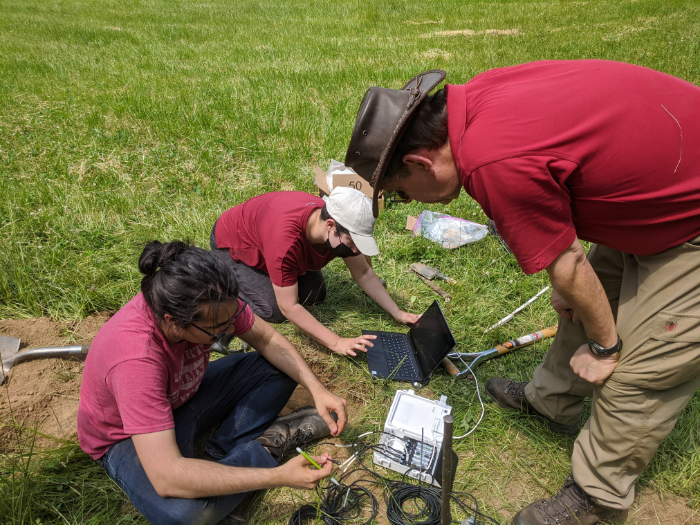It’s 2021; the weather is warming; people are getting vaccinated — time to start fieldwork again! This past week I went into the field with my graduate students Bojan Milinic and Gina Pope to install Terros-12 soil sensors at a field site near the Pennypack Creek in Philadelphia. Getting the sensors into the ground at this site took three hours of digging in the hard, rocky soil in nearly 90 deg F heat. Remind me again: why was I excited about field work?
Actually, I am eager to see the data. These sensors record temperature, soil moisture, and bulk soil electrical conductivity at a regular time interval. The local petrophysical relationship between soil moisture and electrical resistivity is usually assumed to be monotonic and single-valued, but if the conductivity is different when the soil is wetting than when it is drying, even with the water content is the same, it affects the interpretation of time-lapse resistivity data.
For his thesis, Bojan will be investigating this hysteresis in soil conductivity and the connection to pore fluid conductivity, work that could have implications for any site where time-lapse resistivity is used to estimate soil moisture dynamics.
Above: Sensors at 15, 30, and 45 cm.
Below: Bojan with the data logger; Gina at the computer; me trying to straighten up after hours of digging.


